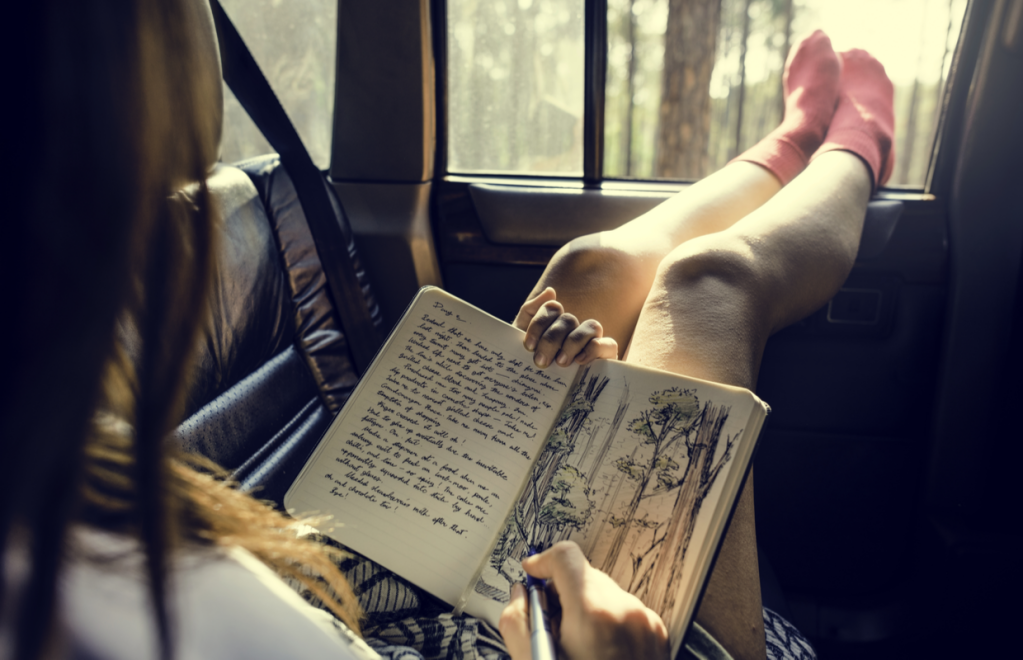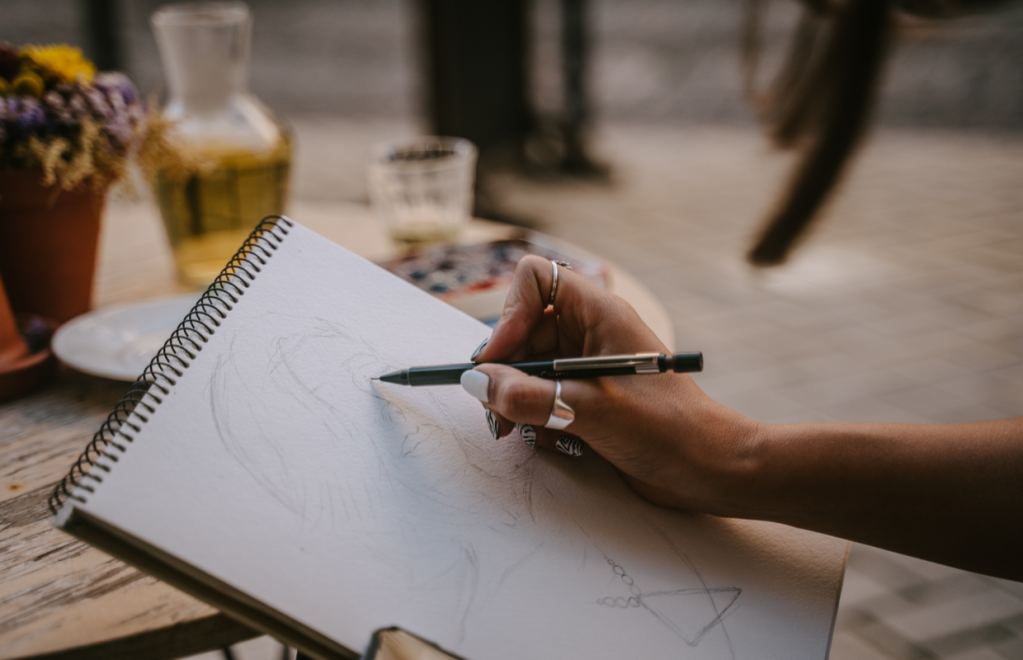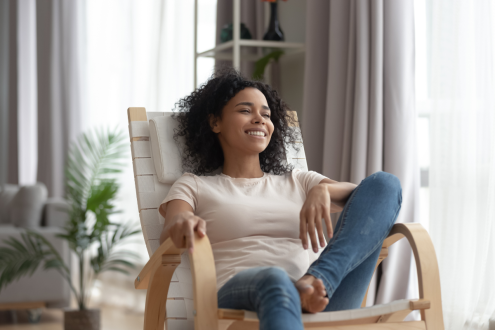Anxiety drawing: how daily sketching can reduce stress
Discover how adopting a daily drawing or sketching habit can help you to reduce your stress and anxiety, even if you're not an artist...

Discover the benefits of putting pencil to paper each day regardless of artistic ability, including reduced anxiety, inner peace and self reflection. Here, Sheila Darcy shows us how.
If you’re struggling with anxiety, drawing could help. We’re not saying you need to become the next Monet or Van Gogh – you don’t even need to be remotely good – but studies have shown that the simple act of daily sketching can work wonders in reducing your stress levels.
Sheila Darcey, author of Sketch By Sketch (Hay House, £16.99), explains how drawing has helped her manage her anxiety, before sharing some simple exercises and prompts to help you get started…
Anxiety verses anticipation
Knock-knock, knock-knock, knock-knock. When the winds of change come knocking at the door of my heart, the sound always startles me. What is this? Who is that? But then I recognise the sound. The knock of change is distinct and familiar. Its rhythm is consistent and persistent. It cannot be ignored.
Instinctually, I move toward the sound, but hesitate. The force of nature stands on the other side. It is a force difficult to fight. When the door opens, chaos will consume me. The wind will swirl, disrupting everything carefully put into place.
As it does, it will ask to believe all things are possible, hope all things will work together for some greater good in my life, and endure all things that rush at me. Beat-beat, beat-beat, beat-beat. The beat of my heart matches the rhythm of the knocking. Why would I invite this chaos in?

Listening with anticipation rather than anxiety
There is a fine line between anxiety and anticipation. Anxiety is a mindset of fear. Anticipation is a mindset of hope. It is possible to feel both at the same time. Fear the chaos and unknown outcomes of change while also anticipating what opportunities will come as a result of it. However, only one of them can govern my actions at a time.
Listening to the knocking with anxiety, the door to change cannot open. Instead, I become paralysed with the compulsive need to protect the peace and fear the worst is about to happen. Total destruction is imminent. The winds have to force their way in, and the change feels invasive and violating as a result.
However, if I listen with anticipation and let the winds of change enter, this breath of fresh air provides extra oxygen into my lungs. My inhale collides into, over and around me. My exhale becomes part of its force. All at once, I am elevated and part of the change rather than a fighter of it.
How does drawing ease anxiety and stress?
According to Abraham Maslow’s hierarchy of needs, ‘safety’ is a basic requirement for a person to experience self-actualisation. Sketching and drawing provides a safe space for you to realise your potential. It allows you to become acquainted with yourself as a creator. This is the nature of your truest self.
In the following drawing exercises, you will express your anxiety through sketching. You can choose to leap into it with hope or despair. Either way, harness any comfort or discomfort you experience and explore the possibilities in every mark you make.
Sketch through what you go through. Let your lines be shaky and uncertain if they want to be. Let them be as wild and nonsensical as you can allow them to be. The blank paper is the safe space you need it to be. Give your mind permission to wander wherever it wants to go.

10 minute anxiety drawing exercise
1. OBSERVE:
How do you cope with anxiety? How do you respond to events that are out of your control? Lastly, how would you like to respond to events that are outside your control? When life is turbulent, you may wrestle with anxiety, as I do at times.
Think of a time in your life when your sense of safety and security was shaken. The circumstances may likely be related to a change in your life, relationships, job, health or general wellbeing. As you think about your reaction to the experience and the anxiety you felt (or currently feel as you recall it), notice the way your body responds. Reflect on your answers to the following questions:
- Did the pace of your breathing change?
- How is your body responding to the thought of anxiety?
- Did you find your mind drifting or focused in this recollection?
- What else is happening to you at this moment as you remember?
As you engage in this first sketching experience, pay attention to your body and allow your pen to move on the paper in synchronicity with the emotion. If your legs are shifting or tapping, let your pen move in rhythm with it. If your shoulders are tense, allow your lines to express this tension. Or, if your mind is jumping from one thought to the next, let your marks jump with it. Sketching through anxiety
2. SKETCH
Using turbulence as a metaphor, sketch a series of waves starting from the bottom of the page all the way to the top. The goal is to represent the motion of turbulence. Imagine the first wave being the most extreme example of turbulence you can imagine. Let your pen move up and down in varying speed, height and distance as you feel your way through this sketching experience. Repeat the waves over and over again until you reach the top of the page.
Notice the way you hold your pen as you sketch. The tightness of your grip as you are drawing represents the intensity of your anxiety and the control you want to have over the movement. The looseness of the grip represents the hope and anticipation you have in passing through this moment to get to your destination.
At some point in the sketch, grip the pen super-tight, almost as if you are cutting off the circulation in your hands. Then release your grip on the pen to something noticeably less intense as you sketch.
3. REFLECT
When you are done, take a moment to reflect on your sketch:
- What patterns, themes or images arose?
- What emotion(s) did you feel during the sketch?
- How did your body respond throughout?
- Did any memories, thoughts or insights surface?
- Did you observe any shifts in energy or perspective

30-minute drawing exercise for anticipation
1. OBSERVE
Think about a time when you anticipated an experience. You knew it was coming but you didn’t know what the outcome would be. Perhaps it was just before a performance, presentation, time of travel or life event. Consider the way in which your body reacts to anticipation and compare it with anxiety. Notice how your body responded as you sketched:
- Did your heart beat faster at the thought of it?
- Did the pace of your breathing change or did you stop breathing altogether?
- Were you filled with hope or dread?
- Are you tense or giddy?
- Did you rehearse all the possible scenarios?
- Did your thoughts seem clear or scattered?
Consider engaging your body in the following sketching experience by allowing it to move in synchronicity with the motion and emotion of anticipation just as you did in the last sketching experience.
2. SKETCH
Using dots, lines, patterns or shapes, create a visual representation of your experience with anticipation and what it feels like to you. Remember, it doesn’t have to look like any particular thing – it does not need to factually represent a person, place, feeling or object. It is more important to focus on releasing this anticipation and putting it on paper. Think of your pen as the mechanism for communicating and let it flow from one mark to the next.
3. REFLECT
- When you are done, reflect on what you have sketched:
- What patterns, themes or images arose?
- What emotion(s) did you feel during the sketch?
- How did your body respond?
- Did any memories, thoughts or insights surface?
- Did you observe any shifts in energy or perspective?
When an aeroplane hits turbulence, the pilot seeks a higher elevation to rise above it. How did you navigate both of these prompts? Reflecting on your sketches, consider your answers to the following questions:
- How are the sketches similar and different?
- How did the intensity of your grip impact you and the result on your paper?
- What did you spend the most time thinking about?
- In times of uncertainty, why is it difficult for you to have hope?
- As you look at the entire sketch, what does it reveal to you about your experience with anxiety and anticipation?
Sketching allows me to hope. It acknowledges fear as a rational, instinctual reaction and allows me to anticipate the sudden changes in my life with a form of acceptance. I can work with the wind instead of fighting against it. I can navigate it with curiosity rather than the sense of impending doom.
This is an edited extract taken from Sketch By Sketch by Sheila Darcey (Hay House, £16.99)










